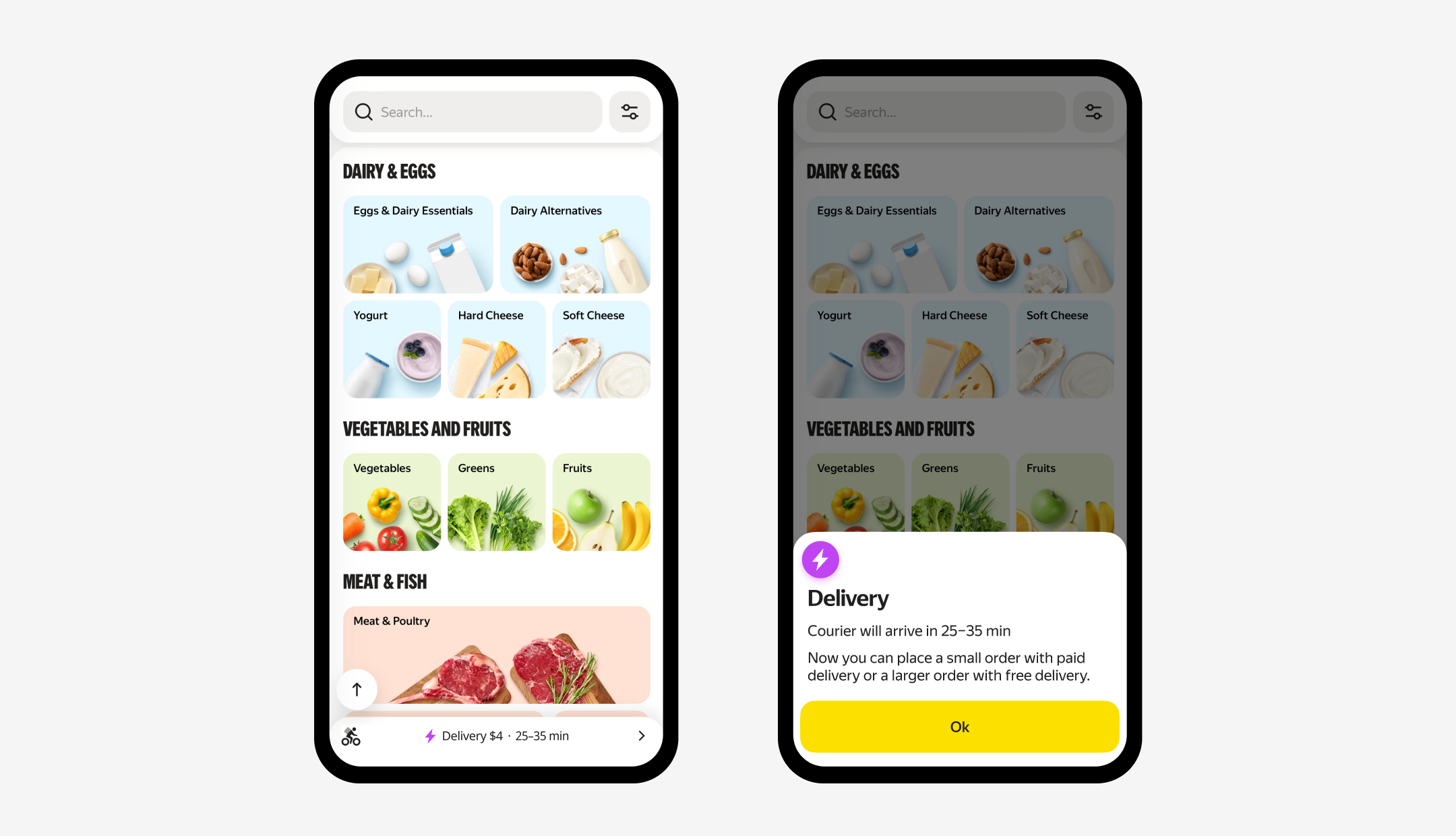Yango Tech and Surtifamiliar Partner for Next-Generation AI-Powered Grocery E-commerce in Colombia


As the digital landscape continues to evolve, the food and beverage industry is experiencing a significant transformation. Ecommerce has emerged as a crucial platform for businesses to reach a broader audience and cater to the growing demand for convenience. This article explores the current state of the food ecommerce industry, the trends shaping its future, and how both established and emerging brands can capitalize on these opportunities.
Food ecommerce refers to the buying and selling of food and beverage products through online platforms. This sector includes a wide range of businesses, from large supermarkets to specialized niche markets.
The convenience offered to consumers, who can order groceries, beverages, and other food items from home, has driven exponential growth in food ecommerce. As online shopping becomes more prevalent, the food ecommerce industry continues to evolve to meet consumer needs.
Read more about food commerce here: What Is Grocery E-commerce?
The food and beverage ecommerce industry has seen remarkable growth. As part of the larger ecommerce market, it has steadily increased its share of global retail sales. By 2025, the global food and beverage ecommerce market is projected to reach $500 billion. Factors contributing to this growth include increased consumer demand for convenience, a wider variety of online products, and technological advancements enhancing the shopping experience.

With the growth seemingly slowed down in some countries, the trends that picked up went over simply being present online and evolved in different directions: from sustainability and getting more local and connecting with buyers, all the way to automation, online personalization that far removes emotional connection. Especially for grocers, the customers want choice.
Sustainability is a key trend in the food and beverage industry. Consumers are more environmentally conscious, seeking brands that prioritize eco-friendly practices, from sustainable ingredient sourcing to reducing packaging waste. Ecommerce platforms highlight sustainable products, making it easier for consumers to make informed choices.
Consumers demand more transparency about where their food comes from and how it’s produced. This drives companies to be open about their supply chains and build emotional connections with customers. Sharing product stories and background fosters loyalty and trust, with ecommerce platforms providing detailed product information and facilitating brand-consumer communication.
The Buy Now, Pay Later (BNPL) model is popular in the food and beverage sector. This payment option allows consumers to purchase items and pay over time, making higher-priced products more accessible. BNPL services, common on ecommerce platforms, drive sales and increase customer satisfaction.
Subscription services transform the food and beverage ecommerce landscape. From meal kits to specialty coffee deliveries, consumers embrace regular, automated deliveries. Subscriptions build loyal customer bases and provide predictable revenue streams, with ecommerce platforms offering flexible options and personalized recommendations.
Streamlined, user-friendly checkout processes convert online shoppers into buyers. Ecommerce platforms continually improve checkout options to reduce friction and enhance the customer experience, offering multiple payment methods, saving customer information for faster checkout, and providing real-time support.
Events like Prime Day significantly impact the food and beverage ecommerce market. These sales events drive substantial traffic to ecommerce platforms, leading to sales surges. Brands offer exclusive deals and promotions during these events to attract new customers and boost their online presence.
Automation revolutionizes the food and beverage industry. From automated warehouses to AI-driven customer service, businesses invest in technology to improve efficiency and reduce costs. Ecommerce platforms integrate these technologies to provide faster, more reliable service to customers.
The direct-to-consumer (D2C) model is gaining traction in the food and beverage industry. By bypassing traditional retail channels, brands can have more control over their pricing, branding, and customer interactions. Ecommerce platforms are essential for D2C brands, providing the tools and infrastructure needed to reach consumers directly, enabling personalized marketing strategies, and fostering stronger customer relationships.
Social media platforms are becoming vital sales channels for food and beverage brands. Social commerce allows consumers to discover and purchase products directly through social media apps like Instagram, Facebook, and TikTok. This trend is driven by the increasing influence of social media on consumer behavior and the seamless integration of shopping features into these platforms. Brands can leverage influencers and user-generated content to boost engagement and drive sales.
Providing a seamless omnichannel experience is crucial for success in the food and beverage industry. Consumers expect to interact with brands across multiple channels, including online, mobile, and in-store. Ecommerce platforms are helping businesses integrate these channels to provide a cohesive and consistent experience for their customers. This includes unified inventory management, synchronized promotions, and consistent branding across all touchpoints.

Investments and partnerships are fueling the growth of the food and beverage ecommerce sector. Companies are investing in technology, logistics, and marketing to enhance their online presence and improve customer experience. Strategic partnerships with ecommerce platforms, delivery services, and other businesses are also helping brands expand their reach and capabilities. Collaborations with tech companies can lead to innovative solutions, such as AI-driven personalization and advanced analytics for better decision-making.

The COVID-19 pandemic had a profound impact on the food and beverage industry. With lockdowns and social distancing measures in place, consumers turned to online shopping in unprecedented numbers. This surge in demand accelerated the growth of the food and beverage ecommerce sector and forced businesses to adapt quickly.
Many companies invested in ecommerce platforms and delivery services to meet the increased demand. The pandemic also highlighted the importance of supply chain resilience and the need for businesses to be agile in response to changing market conditions.
Online grocery sales skyrocketed, and many consumers who were initially hesitant to shop for food online became accustomed to the convenience. This shift in consumer behavior is likely to have a lasting impact on the industry, as more people continue to prefer online shopping even after the pandemic.
Small brands are making significant strides in the food ecommerce market. These nimble businesses can quickly adapt to changing consumer preferences and often focus on niche markets that larger companies may overlook. Ecommerce platforms provide small brands with the tools they need to compete on a global scale, from robust marketing features to efficient logistics solutions. As consumers continue to seek out unique and high-quality products, small brands are well-positioned to capture a growing share of the food ecommerce market.
Small brands often emphasize quality, artisanal production methods, and unique product offerings that resonate with consumers looking for something different from mass-produced items. They can also build strong brand loyalty by engaging directly with their customers through social media and personalized marketing efforts.
Yango Tech provides a comprehensive suite of software solutions designed to empower food e-commerce companies of all sizes. By equipping businesses with the technologies that solve every e-commerce burning issues, businesses are able to streamline operations, enhance customer experience, and achieve profitability in the competitive online food market.
Yango Tech's solutions address key challenges faced by food e-commerce businesses:
Inventory Management: Real-time inventory tracking ensures accurate product availability and reduces stockouts.
Order Fulfillment: Efficient order picking and processing minimize fulfillment times and expedite deliveries.
Delivery Management: Yango Tech integrates with various delivery services, offering customers flexible delivery options and real-time tracking.
Customer Experience: User-friendly mobile applications and online marketplaces provide a seamless shopping experience for customers.
Data Analytics: Yango Tech's platform provides valuable data insights that enable businesses to optimize pricing strategies, personalize marketing campaigns, and improve overall operational efficiency.
Yango Tech caters to the growing demand for fast and convenient food delivery with innovative and tailored technology. The e-commerce solutions empower businesses to fulfill orders within tight timeframes, meeting the expectations of today's time-pressed consumers.
By leveraging Yango Tech's software, food e-commerce companies can gain a competitive edge, build brand loyalty, and capitalize on the vast potential of the online food market.
The food and beverage ecommerce industry is evolving rapidly, driven by changing consumer preferences, technological advancements, and market dynamics. Businesses that adapt to these trends and leverage the power of ecommerce platforms will be well-positioned for growth. From sustainability and transparency to social commerce and D2C models, the opportunities are vast. By staying informed and agile, brands can thrive in this competitive landscape and meet the needs of today's discerning consumers.